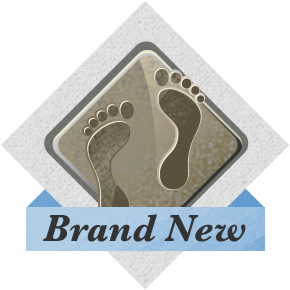Introduction
Take the Journey
When did the first people arrive in the Americas? Indigenous creation stories tell how our ancestors emerged as humans from the earth, the water, the sky and the land below. Some people believe that we walked into the Americas on foot, across an ancient land bridge that once connected Asia and North America. Others say we paddled here in ocean-going canoes along the Pacific coastline. There’s one thing that all of these views of arrival have in common. They all begin with a journey.
By 1491, tens of millions Indigenous people were living in every part of the Americas, from the high Arctic to the southern tip of South America. There were countless Indigenous nations, each with their own distinct language and ways of life. But this didn’t happen overnight. It took thousands of years to build this diverse world from a very small founding population. Today we continue our search for the origins of our ancestors, and the roots of our cultural identity as Indigenous people.
You’re invited to Take the Journey through Indigenous Americas over the past 20,000 years. Find the three objects in each episode then take the quiz and see how much you know about the Americas before 1491.
Episode 1
Origins
When did the first people arrive in the Americas? Indigenous creation stories tell how our ancestors emerged as humans from the earth, the water, the sky and the land below. Some people believe that we walked into the Americas on foot, across an ancient land bridge that once connected Asia and North America. Others say we paddled here in ocean-going canoes along the Pacific coastline. There’s one thing that all of these views of arrival have in common. They all begin with a journey.

Episode 2
Environment
For thousands of years Indigenous people have caused significant changes to the natural environment through resource harvesting, farming, urban development, irrigation, controlled burning and deforestation.

Episode 3
Agriculture
The Neolithic era began nearly 10,000 years ago in Mesoamerica and South America with the cultivation of maize and potatoes. Crops like sweet potatoes, beans and cacao were cultivated and spread throughout the Americas through trade networks.

Episode 4
Architecture
Whether living a nomadic existence or in sprawling urban centres, Indigenous people created iconic, innovative and diverse architectural styles. Their homes and community structures fulfilled the needs and values of their society.

Episode 5
Governance & Trade
Each Indigenous nation developed its own unique governance models to manage their citizens and expand their territories. These systems ranged from patriarchal and matrilineal-based societies to complex political systems governing multi-nation empires. Complex trade networks were developed to satisfy political, social and economic goals.

Episode 6
Science & Technology
The ingenuity, skill and talent of Indigenous people is found in the earliest use of the number “0”, the mapping of planets and stars, the development of multi-year calendars and the invention of writing systems.

Episode 7
Art & Culture
The artistic expressions of Indigenous societies have survived to this day through the preservation of ancient cultural artifacts and in works created by contemporary artists working in traditional styles.

Episode 8
Continuance
The final episode of 1491 looks at stewardship of Indigenous history in the 21st century. The episode will explore Indigenous perspectives on cultural material repatriation, language preservation, traditional knowledge and archaeology.
-
0Take the Journey
-
1Origins
-
2Environment
-
3Agriculture
-
4Architecture
-
5Governance & Trade
-
6Science & Technology
-
7Art & Culture
-
8Continuance
